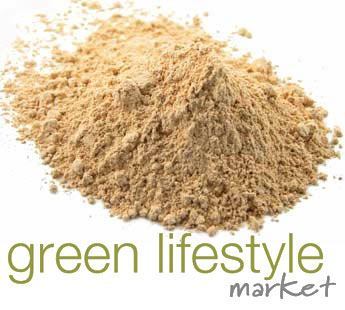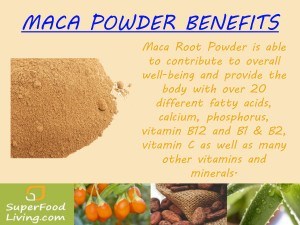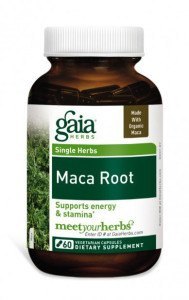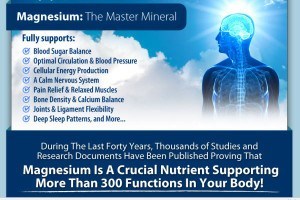As a clinician, it is imperative that I understand all different types of unique health problems and metabolic challenges. On a biochemical level what may be a superfood for one individual may be poison to another. Histamine intolerance is an area where this is the case.
People who are unable to effectively metabolize histamines must restrict their consumption of many foods that I typically recommend on a regular basis. If you have a histamine intolerance, consuming histamine rich foods can lead to chronic health issues such as allergies, asthma, sinus problems, eczema, chronic pain, menstrual problems, and much more.
I always wondered about what was happening with individuals who told me they were “allergic to the sun.” Interesting research is indicating this is a histamine response, as UV light can trigger histamine release. Other research is indicating that those susceptable may have problems with high-intensity exercise, especially done in a warm environment. Individuals with periods of high estrogen may have higher than normal histamine responses and high stress increases histamine levels and decreases the bodies ability to metabolize the histamine.
What is Histamine?
Histamine is an in important neurotransmitter and immune messenger molecule. It is involved in processes involving hydrochloric acid secretion for digestion, triaging water reserves to key areas of the body and the inflammatory response. Histamine receptors are located all over the body and have many important functions including:
- Histamine H1 receptors: Smooth muscle and endothelial cells affecting skin; blood vessels (Benadryl and Claritin block activity of these receptors)
- Histamine H2 receptors: Cells in the intestines control acid secretion, abdominal pain, and nausea; heart rate
- Histamine H3 receptors: Central nervous system controlling nerves, sleep, appetite and behavior
- Histamine H4 receptors: Thymus, small intestine, spleen, colon, bone marrow and white blood cells; inflammatory response
One of the major effects of histamine is causing the blood vessels to swell and dilate. When the body senses that it is threatened, it will secrete higher amounts of histamine. This allows the white blood cells to quickly move through the bloodstream and find the potential threat or infection. This is an important component to a healthy immune response.
When Does Histamine Become a Problem?
Histamine only becomes a problem when we have metabolic disturbances that do not allow us to effectively metabolize histamine properly. When histamine is formed it is broken down by specific enzymes. In the central nervous system it is metabolized by hitamine N-methyltransferase (HMT), while in the digestive tract it is broken down by diamine oxidase (DAO).
The experts state that DAO is the major enzyme involved in histamine metabolism. The enzyme converts the histamine into imidazole acetaldehyde which does not trigger any sort of reaction in the body. DAO is responsible for ensuring a steady histamine level required for the balance of numerous chemical reactions taking place in the body.
Some individuals have altered DAO production due to a number of different factors including:
Small Intestinal Bacterial Overgrowth (SIBO) – some gut microbes produce high amounts of histamines as a byproduct of their metabolism.
Copper, Vitamin C, and B6 Deficiency: Copper and Vit C are crucial components of the DAO enzyme and B6 is a key cofactor that enables DAO to degrade histamine.
Leaky Gut Syndrome: Intestinal permeability creates major inflammatory stress in the body which can contribute to poor DAO function.
Genetic Polymorphisms in DAO enzyme – this can be seen on the 23andme SNP’s. A homozygous DAO would make someone more susceptible to developing a histamine intolerance.
Use of Certain Medications
- Non-steroidal anti-inflammatory drugs (ibuprofen, aspirin)
- Antidepressants (Cymbalta, Effexor, Prozac, Zoloft)
- Immune modulators (Humira, Enbrel, Plaquenil)
- Antiarrhythmics (propanolol, metaprolol, Cardizem, Norvasc)
- Antihistamines (Allegra, Zyrtec, Benadryl)
- Histamine (H2) blockers (Tagamet, Pepcid, Zantac)
According to expert Dr. Amy Myers MD, “Histamine blockers, a class of acid-reducing drugs, seem like they would help prevent histamine intolerance. These medications can actually deplete DAO levels in your body.”
According to Chris Kresser L.AC, “Histamine is different than typical food sensitivities or allergens in that it is a cumulative problem.” So we begin to have symptoms when we either take in too many histamine molecules or we reduce the DAO enzyme to the point where the histamines overload the system. These symptoms will last until the body metabolizes the histamines and removes them from the system.
Who Has Histamine Intolerance
According to available research, histamine intolerance manifests in approximately 3% of the population. In up to 20% of these cases the symptoms occur mostly when histamine containing foods are used in combination with DAO inhibitors such as alcohol. Approximately 80% of individuals with histamine intolerance are women and most of them are over 40.
The three biggest factors involved with histamine intolerance include leaky gut syndrome or related disorders such as Crohn’s disease, Irritable bowel, celiac, gluten sensitivity, etc. The second factor is a genetic polymorphism with the DAO enzyme. Heavy alcohol and/or medication usage is another strong risk factor.
Diagnosing Histamine Intolerance
This is a challenging condition to diagnose for a number of reasons. The first is that there are so many popular foods, many of which are considered health foods, that are high in histamines. Also, some individuals have a unique gut flora that is producing high histamine levels.
Most doctors are not familiar with histamine intolerance and never consider this as a contributing factor in the individual’s health challenges. In fact, many physicians including myself, typically recommend a diet high in histamine containing foods. This includes fermented foods which have incredible health benefits for those with adequate histamine metabolism.
Research has also shown that people react quite differently to elevated histamine making it that much harder to pinpoint. As a clinician, I have learned that when individuals react very poorly to fermented foods it is a sign of histamine intolerance. Most people respond very well to small amounts and gradually increasing levels of fermented foods. Individuals with histamine intolerances often break out with hives, eczema, rashes, puffy eyes, headaches, etc.
Common Symptoms of Histamine Intolerance Include:
- Headaches/Migraines
- Difficulty falling asleep, easy arousal
- Hypertension
- Vertigo or Dizziness
- Arrhythmia, or accelerated heart rate
- Difficulty regulating body temperature
- Anxiety
- Nausea, Vomiting
- Abdominal cramps
- Flushing
- Nasal Congestion, Sneezing, Difficulty Breathing
- Abnormal Menstrual Cycle
- Hives
- Fatigue
- Tissue swelling
Histamines travel throughout the bloodstream and therefore can effect the gut, lungs, skin, brain and entire cardiovascular system. This is why there are such a wide array of health problems associated with it and it is quite challenging to pinpoint and diagnose if you are not aware of the condition.
Testing For Histamine Intolerance
The 23andme genetic test will look at genes associated with DAO enzyme production. When an individual has a homozygous mutation they will most likely struggle with histamine metabolism. This may not occur until after a stressful season of their life when their gut barrier breaks down and their adrenal glands are unable to keep up with the demands placed upon them. This creates a vicious cycle of chronic inflammation and inflammatory stress that depletes the body of vital reserves and exposes the genetic weaknesses of the individual.
There are lab tests that can be done that analyze the ratio of histamine/DAO. A high histamine/DAO ratio indicates that one is ingesting too much histamine and is not producing enough DAO to effectively metabolize it.
Without getting the blood test you could do a histamine challenge by consuming a number of different fermented foods and high histamine foods and see if this aggravates your symptoms. If so, try a low-histamine diet for a week and if you notice significant improvements you most likely have histamine intolerance.
To improve your tolerance to histamine, it is critical to heal the gut and address the dysbiotic issues that are at the root of the problem. I would recommend working with a qualified health practitioner to assess and create a specific plan to address the bacterial imbalance.
Foods High in Histamines:
Some foods naturally have more histamine content while others accumulate histamines while they age. Fermented and dried foods typically have the highest levels of histamines. A low histamine diet must be focused around getting foods at their peak level of freshness. Here is a list of high histamine foods:
- Fermented alcoholic beverages, especially wine, champagne and beer
- Fermented foods: sauerkraut, vinegar, soy sauce, kefir, yogurt, kombucha, etc
- Vinegar-containing foods: pickles, mayonnaise, olives
- Cured meats: bacon, salami, pepperoni, luncheon meats and hot dogs
- Soured foods: sour cream, sour milk, buttermilk, soured bread, etc.
- Dried fruit: apricots, prunes, dates, figs, raisins
- Most citrus fruits
- Aged cheese including goat cheese
- Nuts: walnuts, cashews, and peanuts
- Vegetables: avocados, eggplant, spinach, and tomatoes
- Smoked fish and certain species of fish: mackerel, mahi-mahi, tuna, anchovies, sardines
- Processed foods of all types – Preservatives are high in histamines
Histamine-Releasing Foods
These foods do not necessarily contain histamine but they block the action of DAO and therefore they potentiate the effects of elevated histamines.
- Alcohol
- Bananas
- Chocolate
- Cow’s Milk
- Nuts
- Papaya
- Pineapple
- Shellfish
- Strawberries
- Tomatoes
- Wheat Germ
- Many artificial preservatives and dyes
DAO-Blocking Foods
- Alcohol
- Energy drinks
- Black tea
- Mate tea
- Green tea
Low Histamine Foods
- Freshly Cooked Meat & Poultry (frozen or fresh)
- Freshly Caught Fish
- EV Olive Oil
- Pasture-Raised Eggs
- Gluten-Free Grains: brown rice & quinoa
- Fresh Fruits: Other than citrus, avocado, tomato, pineapple, bananas and strawberries
- Fresh Vegetables (except spinach and eggplant)
- Coconut Milk, Rice Milk, Hemp Milk, Almond Milk
- Coconut Oil & Grass-fed Butter/Ghee
- Organic Coffee
- Almond Butter
- Leafy Herbs
- Herbal Teas
Unique Variables with Histamine Intolerance
People with histamine intolerance react in a multitude of different ways as shown in this study. Some people cannot handle any high histamine foods while others can handle certain types but not others.
As an example, an individual may tolerate avocados, berries, and lemons quite well but have significant reactions with any sort of fermented foods or wine. You will have to find the unique ways that you react and understand what triggers reactions and what doesn’t.
Overtime, as histamine content is reduced and the individual improves their gut health, reduces inflammation, improves liver function and stabilizes their adrenals they will be able to handle more of the histamines. For some, this will mean they will be able to incorporate small amounts of all the higher histamine foods. For others they will only be able to handle certain foods while others will continue to trigger reactions.
What This Means to You
If you struggle with major symptoms listed above when you have the various high histamine foods you may have this problem. In particular, if you struggle with fermented foods and probiotic supplements this is a classic sign of histamine intolerance.
Chances are you do not have this problem, but you may come across a friend or a client (for those of you who are health coaches and doctors) who will have these signs and symptoms. If so, have them try a low-histamine diet for a week and see if it makes a difference. If so, then continue on the diet and work with a functional medicine practitioner to support the gut and detoxification systems.
If you are suffering from an acute histamine reactions, taking 10 grams of liposomal vitamin C and taking DAO enzymes or high dose proteolytic enzymes can help to reduce the effects of this. A diet rich in the flavoinoid luteolin has been shown to reduce mast cell activation. This is found in carrots, bell peppers, thyme, rosemary, peppermint, oregano, romaine lettuce, artichoke, pomegranate, chocolate, rooibus tea, buckwheat sprouts and cucumbers among other things.
Sources For This Article Include:



